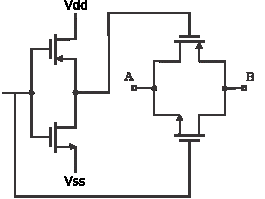brito.tb
Junior Member level 2
Hi,
I´m developing a programable capacitor in CMOS 0.35um, but in the process I found some dificulties. What kind of mos switch do you indicate? I´m using a CMOS tranmission gate, but it´s not working. Thanks for your help.
PS: I want to show the figure but the forum don´t allow. I need 2 posts
I´m developing a programable capacitor in CMOS 0.35um, but in the process I found some dificulties. What kind of mos switch do you indicate? I´m using a CMOS tranmission gate, but it´s not working. Thanks for your help.
PS: I want to show the figure but the forum don´t allow. I need 2 posts


